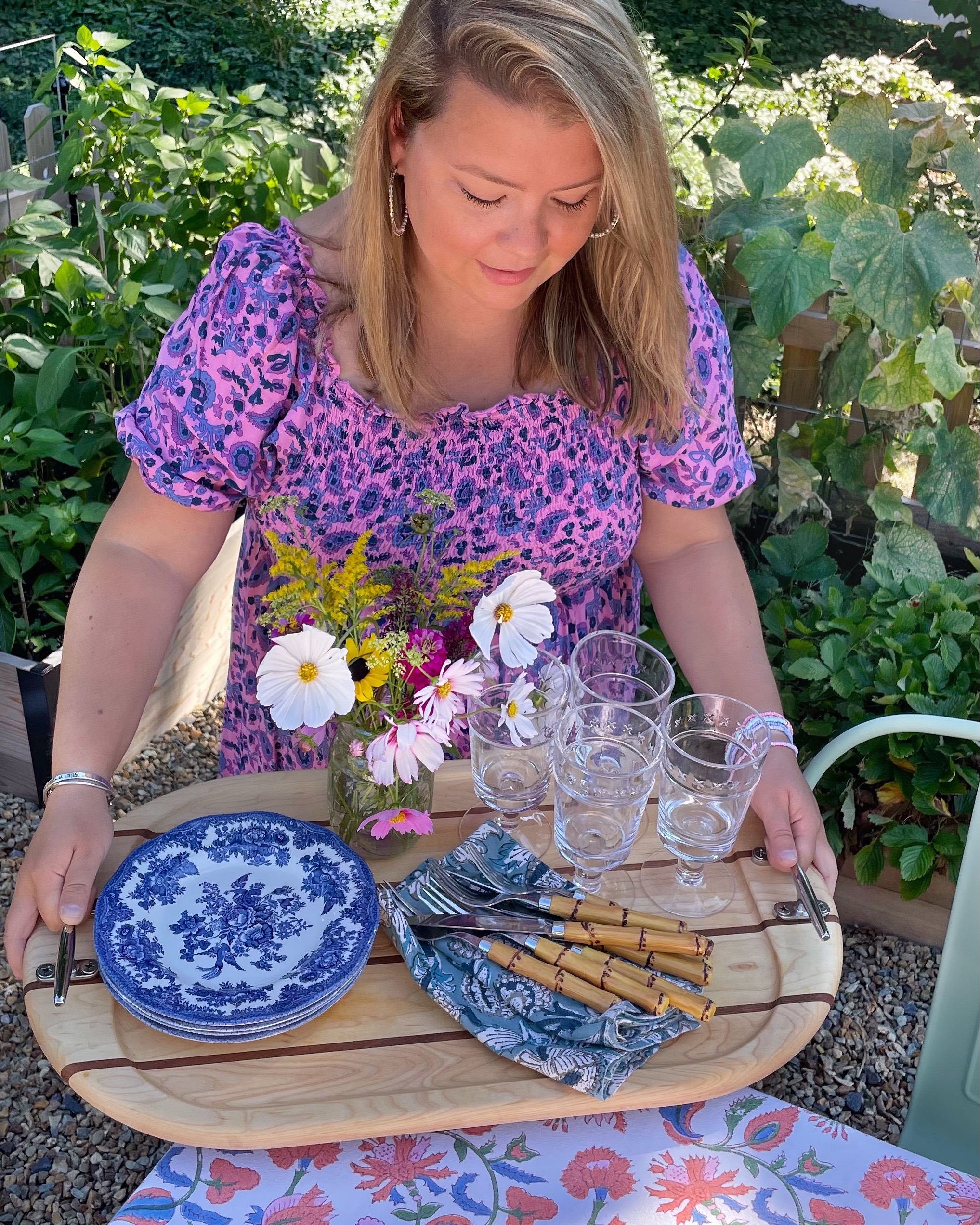If you’ve been following along with me this year you’ve heard me share my love of Little Leaf Farms! I’ve been lucky to partner with the brand on tons of recipe content this year using their fresh, crunchy lettuce that is grown right here in Massachusetts. I rave about the tasty produce, but another reason I’ve long admired the brand is that they put sustainability at the forefront of each container of lettuce they grow and sell. I had the opportunity to visit Little Leaf Farm’s greenhouses last week to tour their facility and chat with CEO Paul Sellew all about sustainability and how their lettuce gets from seed to store. 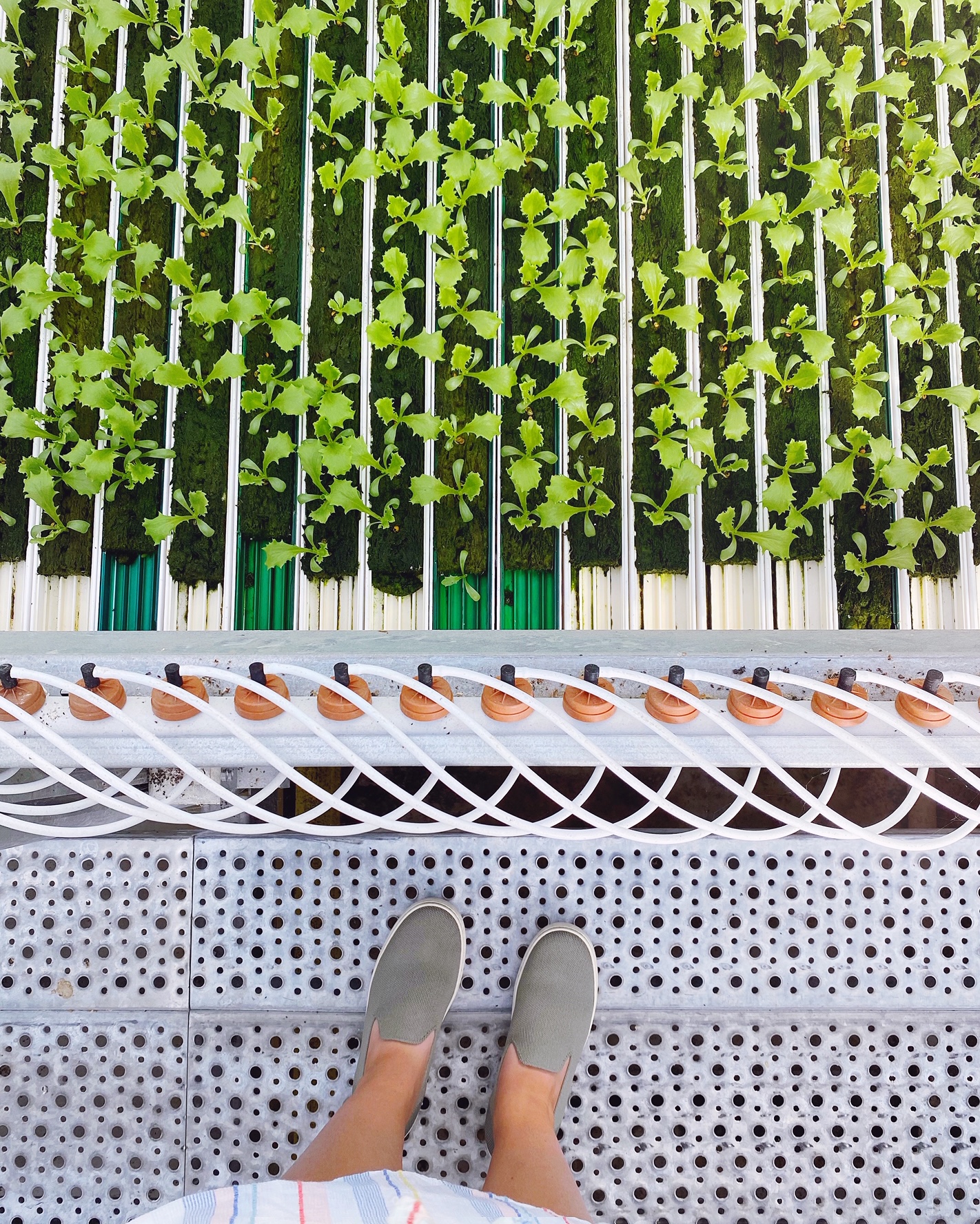 Let me start off by saying that learning how your food is produced is super cool. Remember that show, How It’s Made, where they take you through the process of making everyday things you use in your home? I got the How It’s Made experience walking through the Little Leaf Farm’s greenhouses and I learned so much. To start, the lettuce is grown hydroponically, without soil. Long “gutters” are filled with a substance called rockwool and a little machine drops seeds at perfectly spaced increments to maximize the growing space. From there, the gutter starts at 23-day journey from one side of the greenhouse to the other.
Let me start off by saying that learning how your food is produced is super cool. Remember that show, How It’s Made, where they take you through the process of making everyday things you use in your home? I got the How It’s Made experience walking through the Little Leaf Farm’s greenhouses and I learned so much. To start, the lettuce is grown hydroponically, without soil. Long “gutters” are filled with a substance called rockwool and a little machine drops seeds at perfectly spaced increments to maximize the growing space. From there, the gutter starts at 23-day journey from one side of the greenhouse to the other.
To the naked eye it looks like massive fields of lettuce are being grown in the ground, but underneath the green leaves the gutters are sliding forward thanks to technology, row by row, growing as they get closer to the end of line. When the lettuce is fully grown and ready to be cut and packaged, the end gutter slides onto a conveyer belt and takes a little ride through a machine that slices off the leaves that end up in our grocery stores. The lettuce leaves get sorted into containers and packaged up to head to our markets – they usually arrive within one day of cutting to stores all around greater New England.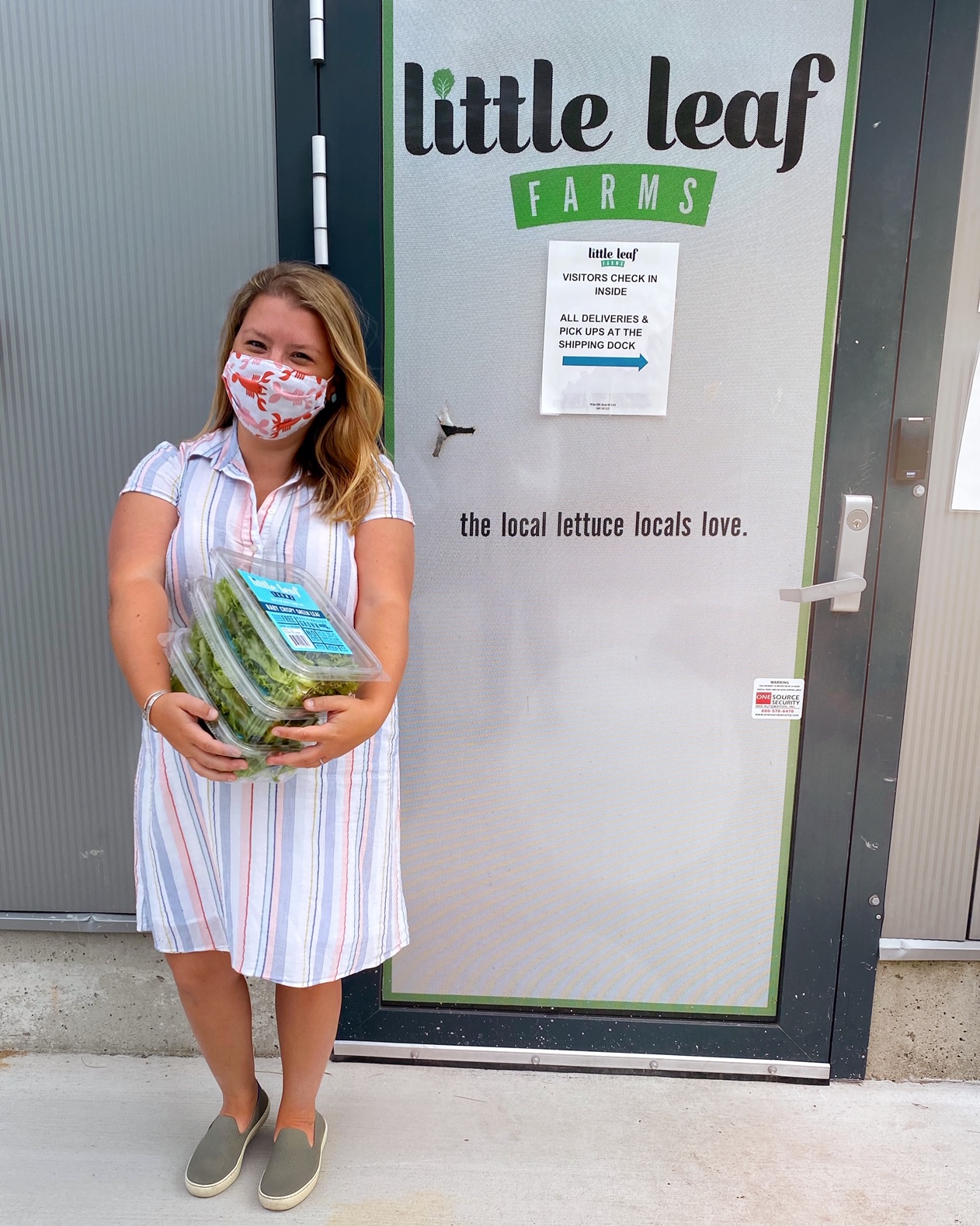 It was a little bit surreal seeing all of that crunchy lettuce in long rows, moving from seed to leaf across 10 acres of greenhouses. One of the coolest parts of the process is that from beginning to end, seed to packaging, there is no need for human hands to touch the lettuce, making it extremely clean. And because of this clean growing technology, it eliminates the need to wash the lettuce in chlorine-based cleaners or other harmful chemical washing agents that many other lettuce producers use. Another really cool way that Little Leaf Farms helps keep their lettuce production free of chemicals is by using a biological control system to combat pests. What is a biological control system? I asked the same question. They use carnivorous predator bugs (like ladybugs, who knew?!) to eat the lettuce-eating pests.
It was a little bit surreal seeing all of that crunchy lettuce in long rows, moving from seed to leaf across 10 acres of greenhouses. One of the coolest parts of the process is that from beginning to end, seed to packaging, there is no need for human hands to touch the lettuce, making it extremely clean. And because of this clean growing technology, it eliminates the need to wash the lettuce in chlorine-based cleaners or other harmful chemical washing agents that many other lettuce producers use. Another really cool way that Little Leaf Farms helps keep their lettuce production free of chemicals is by using a biological control system to combat pests. What is a biological control system? I asked the same question. They use carnivorous predator bugs (like ladybugs, who knew?!) to eat the lettuce-eating pests.
Walking through the greenhouses and learning about the growing process highlighted how sustainability is at the forefront of Little Leaf Farm’s plans at every step. The greenhouses themselves were built in area that is directly plugged into local solar farms, using the power of the sun to not only grow their lettuce, but also power many of the facilities. The design of the greenhouses features a sawtooth roof that collects rainwater and funnels it through hollow beams into large collection tanks. The rainwater is then cleaned using UV technology (not chemicals!) and used to hydrate the lettuce. Little Leaf Farms grows their lettuce hydroponically using 100% captured rainwater and the advanced fertilization and irrigation system uses 90% less water than field-grown greens. That’s a lot of water when you’re talking about acres of lettuce!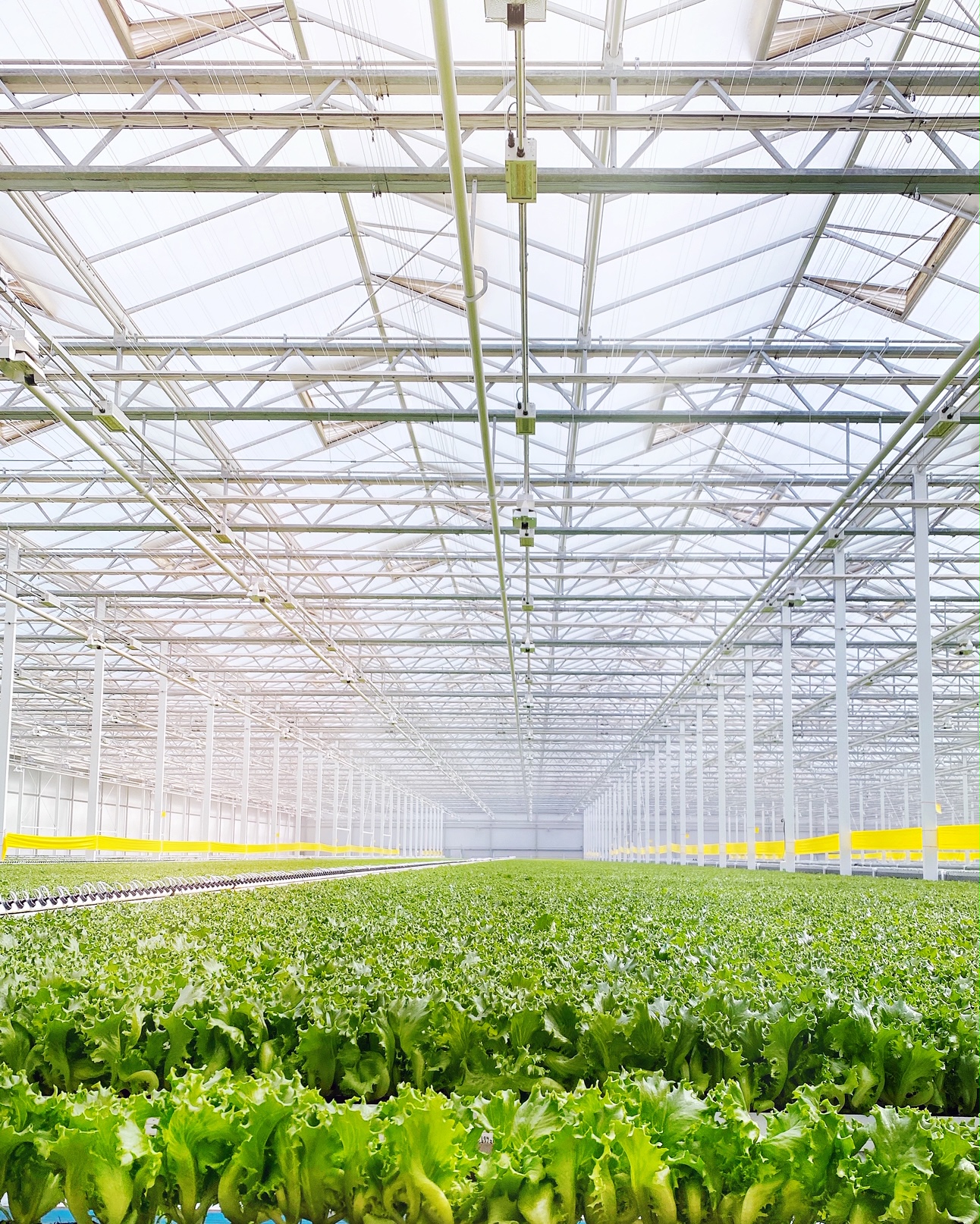 After touring the greenhouses, we followed the lettuce filled gutters on their journey into the production and packaging facility where they’re cut and packed for sale. We talked a lot about how Little Leaf Farms is working to make their packaging sustainable. Currently the lettuce is packaged in containers made out of 100% PET post-consumer recycled plastic (which basically means that the lettuce containers are made out of recycled water bottles). This type of plastic, when recycled properly, is infinitely recyclable – so make sure to clean out your containers and get them into the correct recycling bin!
After touring the greenhouses, we followed the lettuce filled gutters on their journey into the production and packaging facility where they’re cut and packed for sale. We talked a lot about how Little Leaf Farms is working to make their packaging sustainable. Currently the lettuce is packaged in containers made out of 100% PET post-consumer recycled plastic (which basically means that the lettuce containers are made out of recycled water bottles). This type of plastic, when recycled properly, is infinitely recyclable – so make sure to clean out your containers and get them into the correct recycling bin!
After the lettuce is packaged it makes a short journey to stores around New England, usually within one-day, to maximize freshness! Fresher lettuce is tastier, greener, crunchier and more nutritious. Fresher lettuce is also way better for the environment — 98% of lettuce in the U.S is grown in California and Arizona and is shipped over 3,000 miles before it reaches our shelves. That’s quite the journey (and a whole lot of fuel) to get leafy greens on your plate. 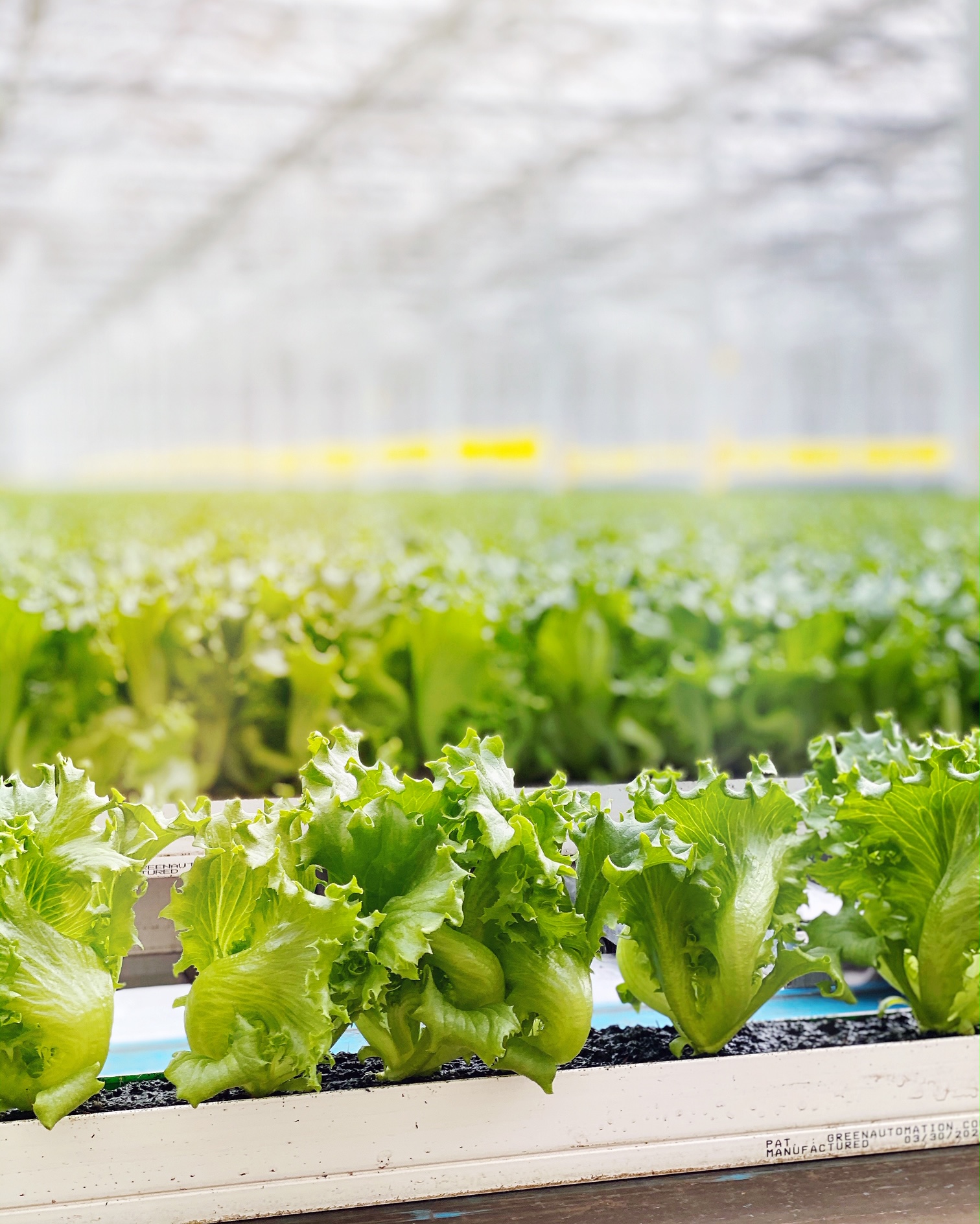 In my conversations with the CEO, Paul Sellew, we talked a lot about how important resilience in our local food system has become with things like natural disasters (California wildfires), climate change (major droughts), and the current COVID crisis. Greenhouse systems, like the one that Little Leaf Farms has designed, are an awesome example of how technology and sustainability can work hand in hand to grow food in a local, responsible way to help with those complex issues. It was truly an eye-opening visit, and has made me an even bigger fan of Little Leaf Farms and their oh-so-tasty lettuce.
In my conversations with the CEO, Paul Sellew, we talked a lot about how important resilience in our local food system has become with things like natural disasters (California wildfires), climate change (major droughts), and the current COVID crisis. Greenhouse systems, like the one that Little Leaf Farms has designed, are an awesome example of how technology and sustainability can work hand in hand to grow food in a local, responsible way to help with those complex issues. It was truly an eye-opening visit, and has made me an even bigger fan of Little Leaf Farms and their oh-so-tasty lettuce.
Please note: This post was created in partnership with Little Leaf Farms. All opinions, images and content are my own. Thank you for supporting brands that support this site.


